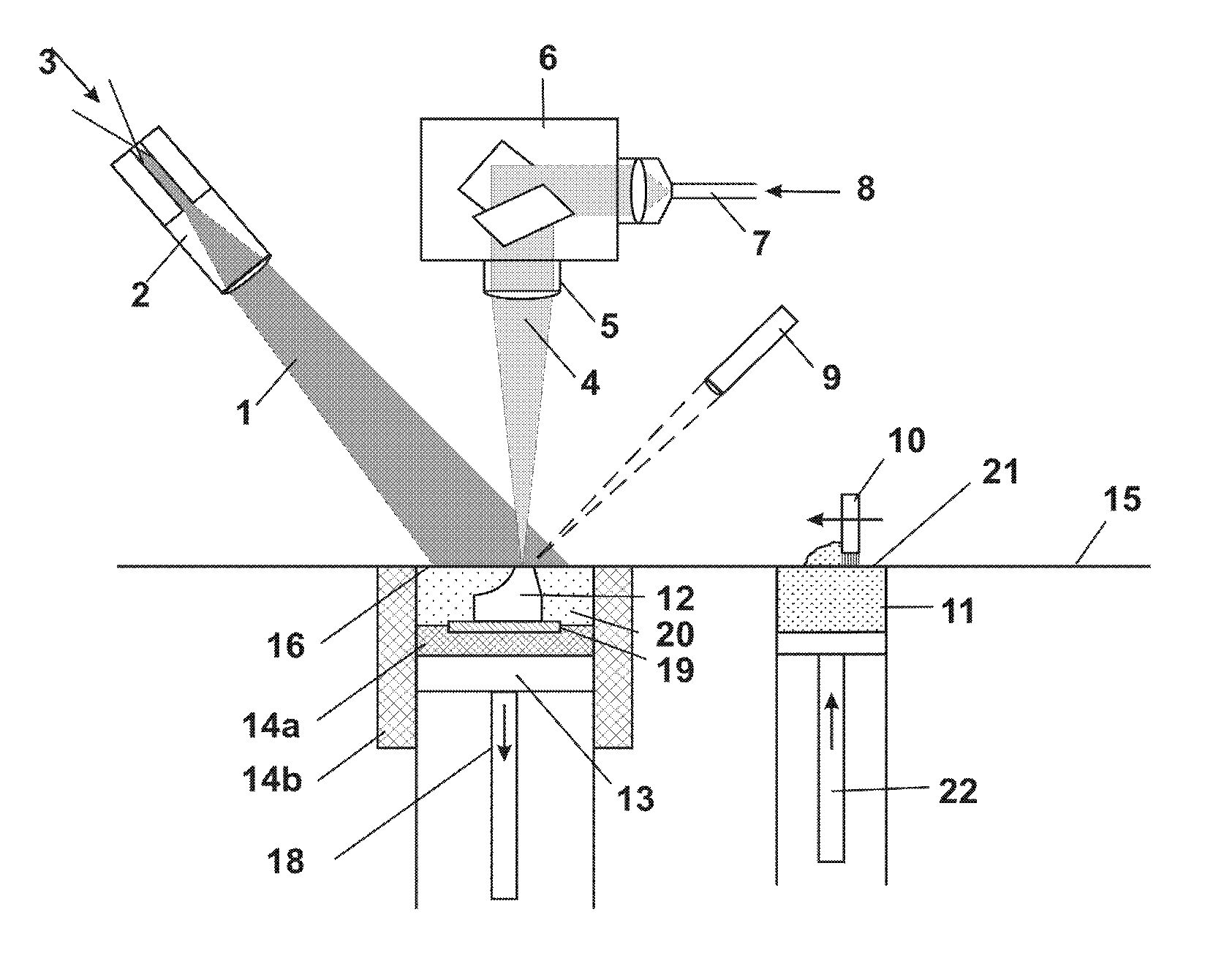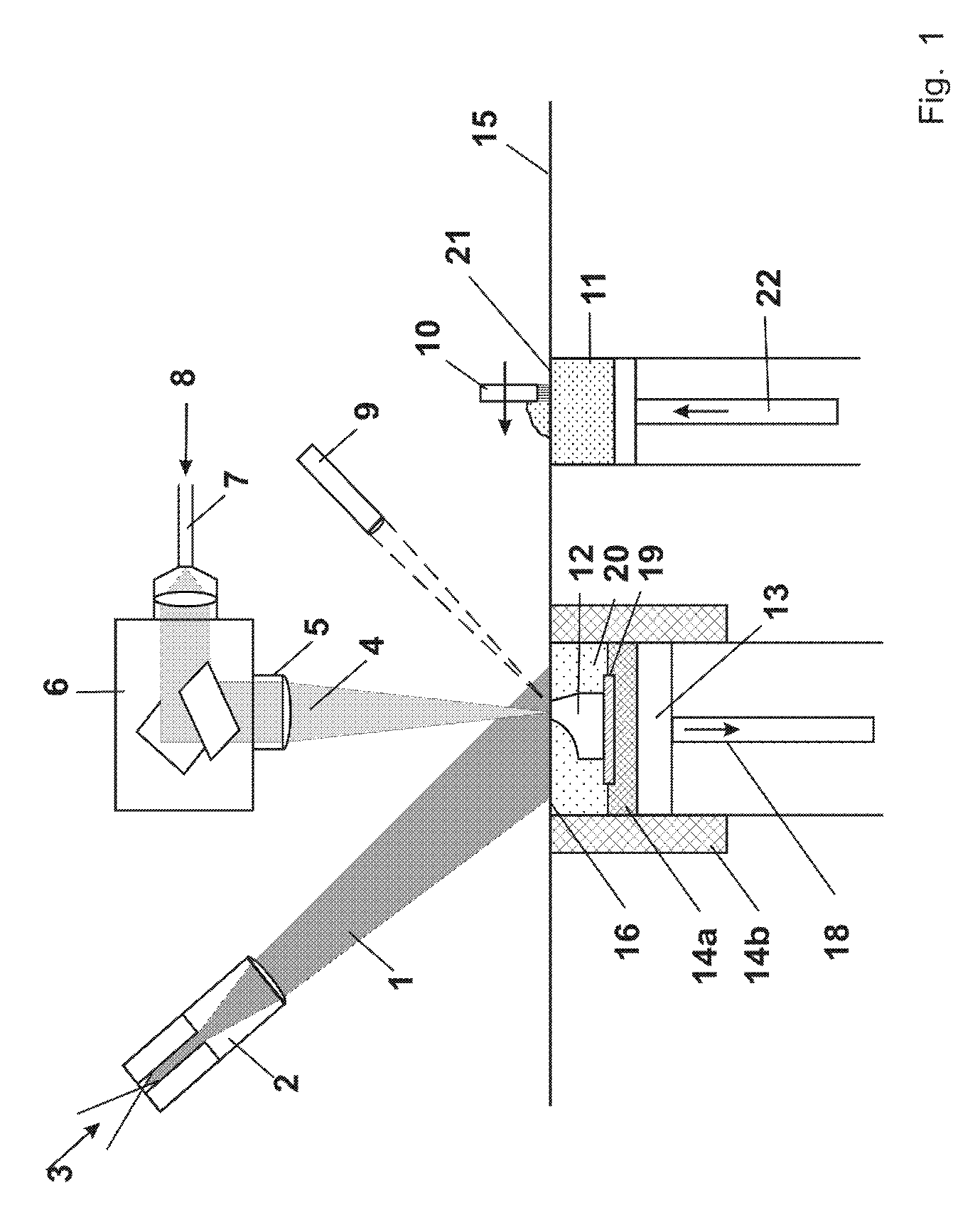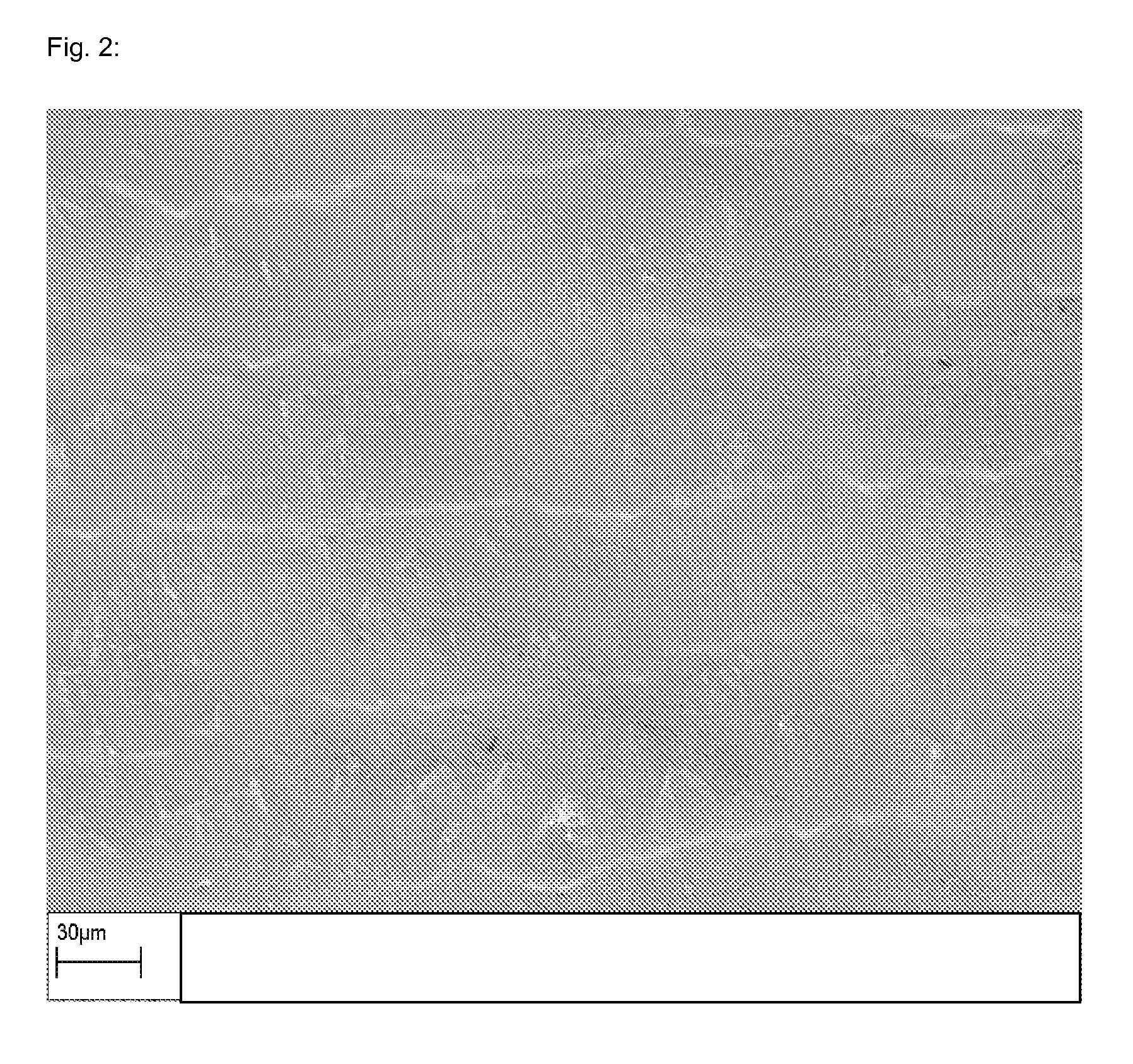Ceramic or glass-ceramic article and methods for producing such article
a technology of ceramics and glass ceramics, applied in the direction of synthetic resin layered products, natural mineral layered products, nuclear engineering, etc., can solve the problems of inability difficult to meet the requirements of small quantity, and few economically viable methods are known. , to achieve the effect of simple preparation, simple determination of final composition, and simple mixing of separate powders
- Summary
- Abstract
- Description
- Claims
- Application Information
AI Technical Summary
Benefits of technology
Problems solved by technology
Method used
Image
Examples
example 1
[0346]A powder “Zaspher 260M™” (available from Innalox bv, 5932 NB Tegelen, The Netherlands) consisting of spherical powder particles of a diameter d50 of 35 μm prepared by condensation from the gas phase is used. The powder consists of 39.5% by weight ZrO2, 1% by weight Y2O3 and 59.5% by weight Al2O3. In the selective laser melting apparatus according to FIG. 1 a layer of the powder with a thickness of approx. 100 μm is deposited on a ceramic substrate of the dimensions 18 ×18 ×3 mm3 produced by conventional sintering of the same powder. The powder layer and the substrate are preheated to a temperature of 1700° C. at a rate of 2 K / s by a CO2-laser beam (1). The preheating to 1700° C. is done only once in the beginning of the build up process and then the preheating temperature is maintained approximately constant at 1700° C. during the whole build up process. The laser beam is incident on the substrate and an area surrounding the substrate and the intensity is homogeneous within th...
example 2
Powder Composition 80% ZrO2, 20% Al2O3
[0348]2.1 Preparation of Article (with Glass Infiltration, without Preheating)
[0349]A powder consisting of 80% by weight of zirconia and 20% by weight of alumina powder with a powder particle size between 25 μm and 45 μm and a d50 value of 35 μm is prepared by mixing two powders prepared separately by crushing, grinding and sieving a solidified alumina melt and a solidified zirconia melt, respectively. In a selective laser melting apparatus a layer of the powder with a thickness of approx. 100 μm is deposited on an aluminium substrate. Subsequently a focussed CO2 laser beam is used to selectively melt regions of the powder layer. The beam diameter is 300 μm on the surface of the powder layer. To melt the powder or powder mixture in the desired regions, the focus of the laser beam (4) is moved in straight adjacent lines over area of the substrate whereby each two adjacent lines overlap by 190 μm at a speed of 100 mm / s. The laser power is set to ...
example 3
Powder Composition 80% ZrO2, 20% Al2O3
[0357]3.1 Preparation of Article (with Glass Infiltration, without Preheating), Examination of Precipitation Behaviour
[0358]The experimental conditions are as described in Example 2.1 The precipitation behaviour in a region is examined in more detail, after the laser has been switched off:
[0359]It is observed that ZrO2 crystals precipitate first from the melt, as soon as the temperature falls below 2200° C. This way the ZrO2 content in the melt is continuously reduced during further cooling down to a temperature of 1860° C. At that temperature, the remaining melt has exactly the eutectic composition (41.5 wt. % ZrO2 / 58.5 wt. % Al2O3). This melt represents 30.4 wt. % of the total mass of the deposited powder. When this eutectic melt finally solidifies, a fine grained two phase microstructure with grain sizes smaller than 1 μm is formed. The larger ZrO2 crystals solidified earlier are embedded in this fine grained matrix.
[0360]3.2 Preparation of ...
PUM
| Property | Measurement | Unit |
|---|---|---|
| Temperature | aaaaa | aaaaa |
| Temperature | aaaaa | aaaaa |
| Temperature | aaaaa | aaaaa |
Abstract
Description
Claims
Application Information
 Login to View More
Login to View More - R&D
- Intellectual Property
- Life Sciences
- Materials
- Tech Scout
- Unparalleled Data Quality
- Higher Quality Content
- 60% Fewer Hallucinations
Browse by: Latest US Patents, China's latest patents, Technical Efficacy Thesaurus, Application Domain, Technology Topic, Popular Technical Reports.
© 2025 PatSnap. All rights reserved.Legal|Privacy policy|Modern Slavery Act Transparency Statement|Sitemap|About US| Contact US: help@patsnap.com



